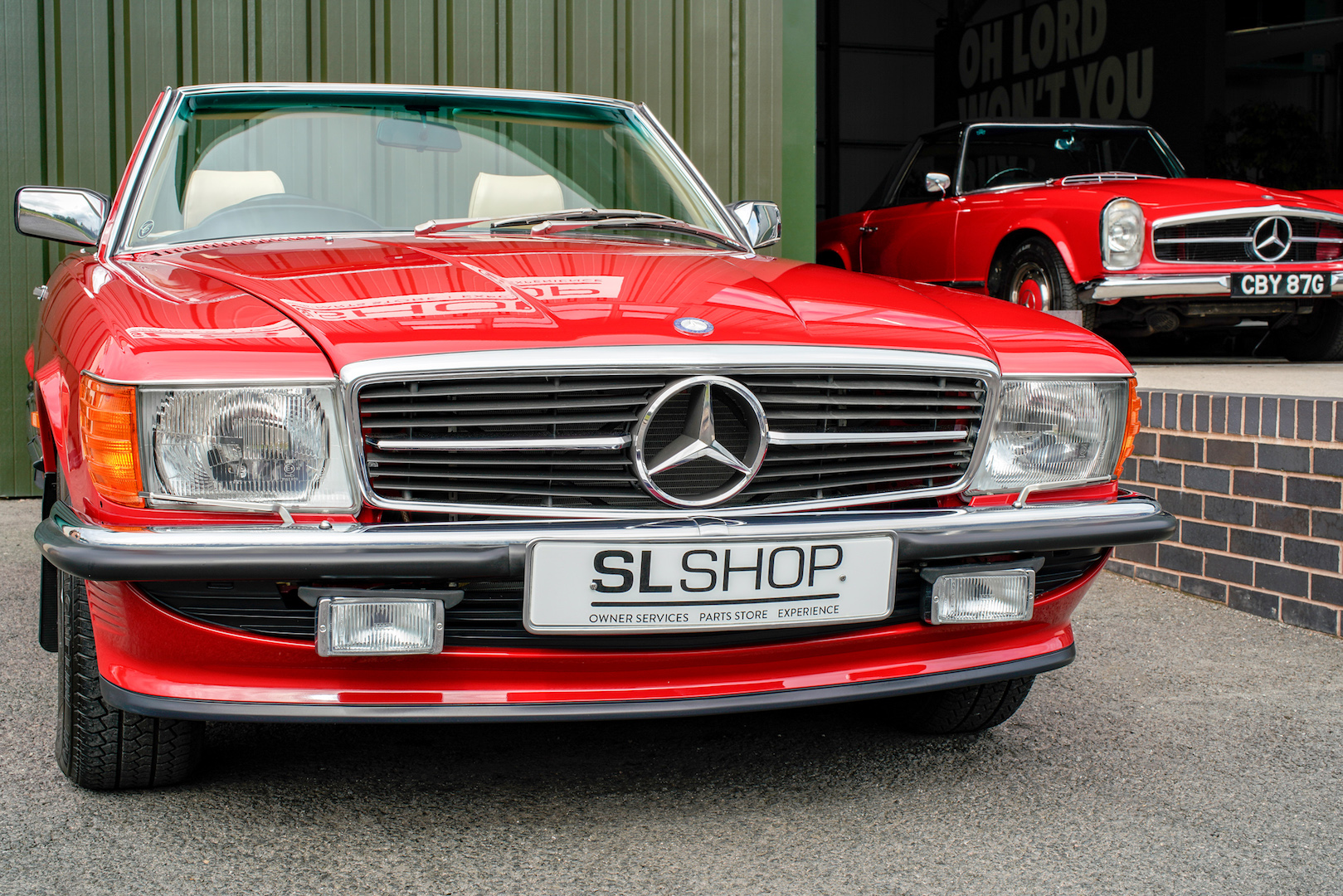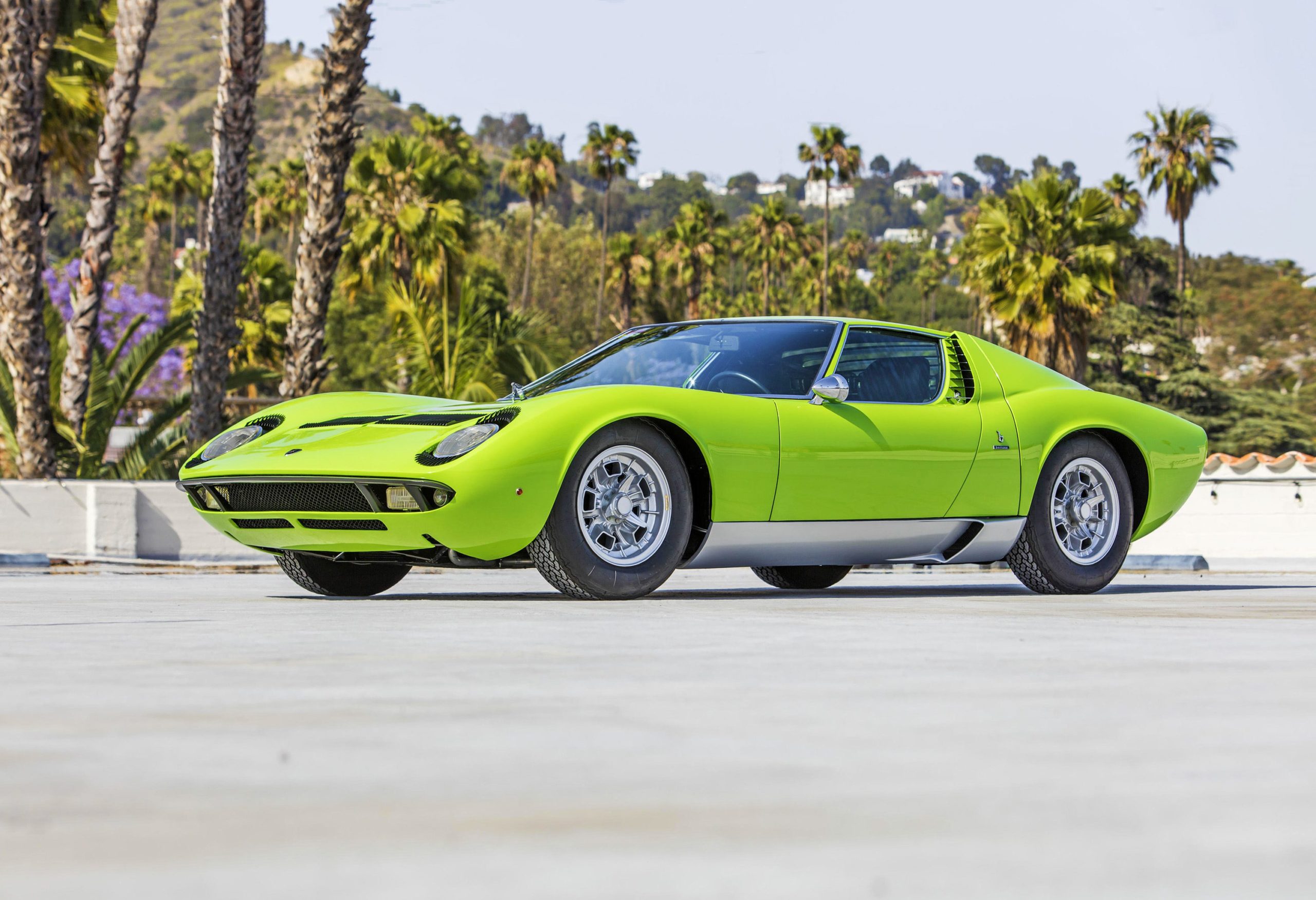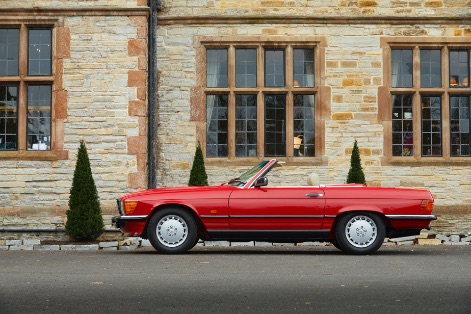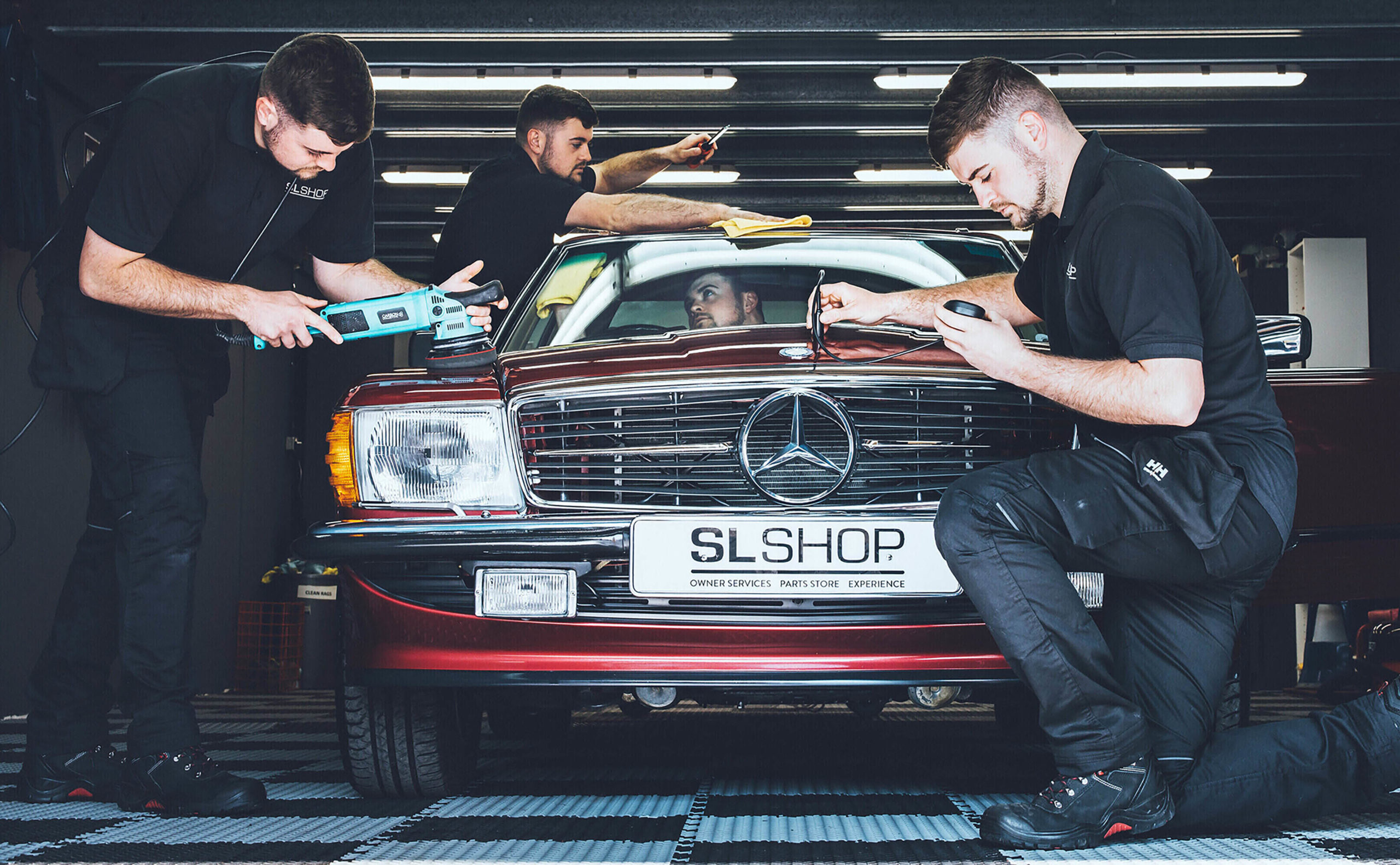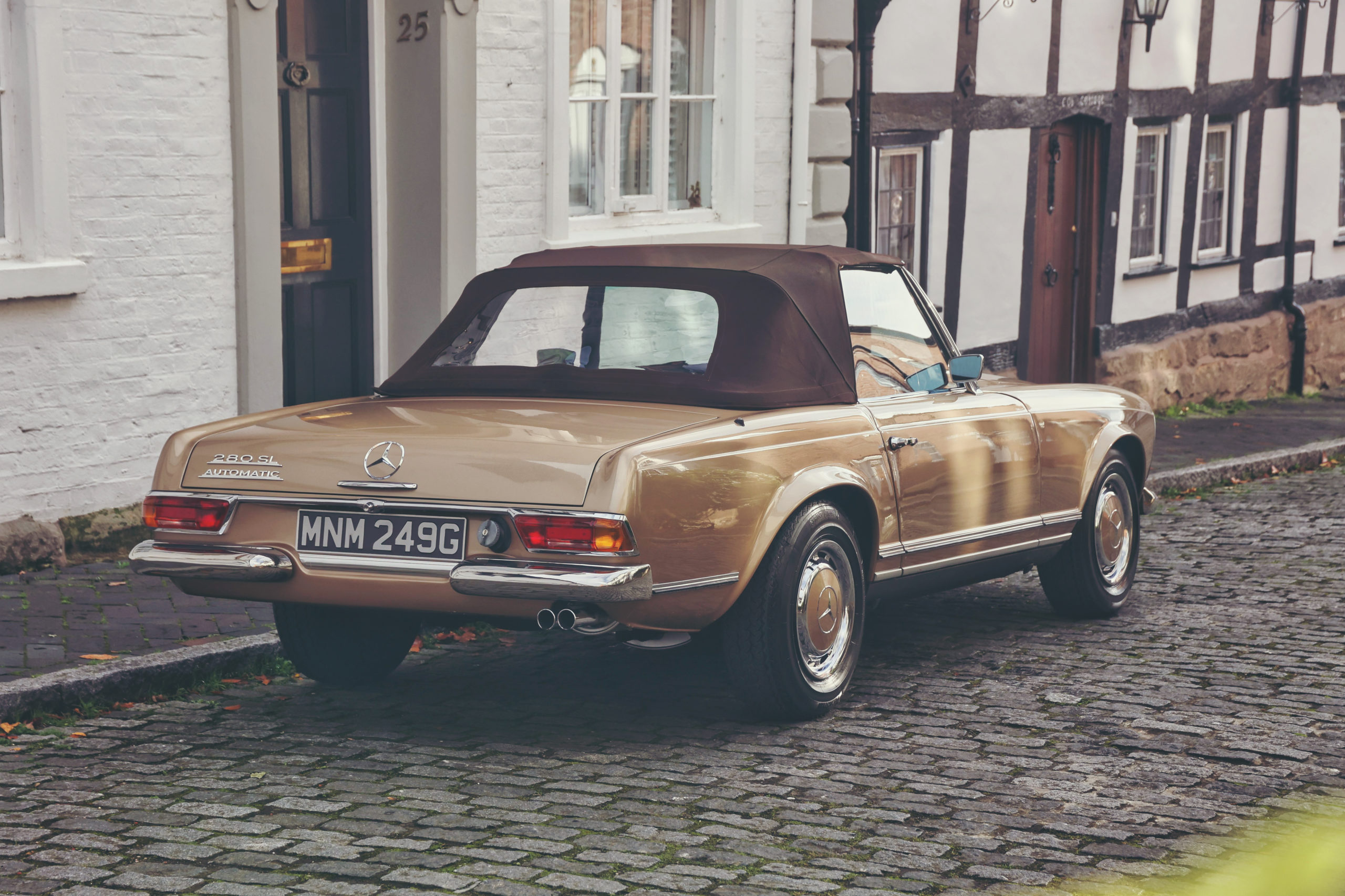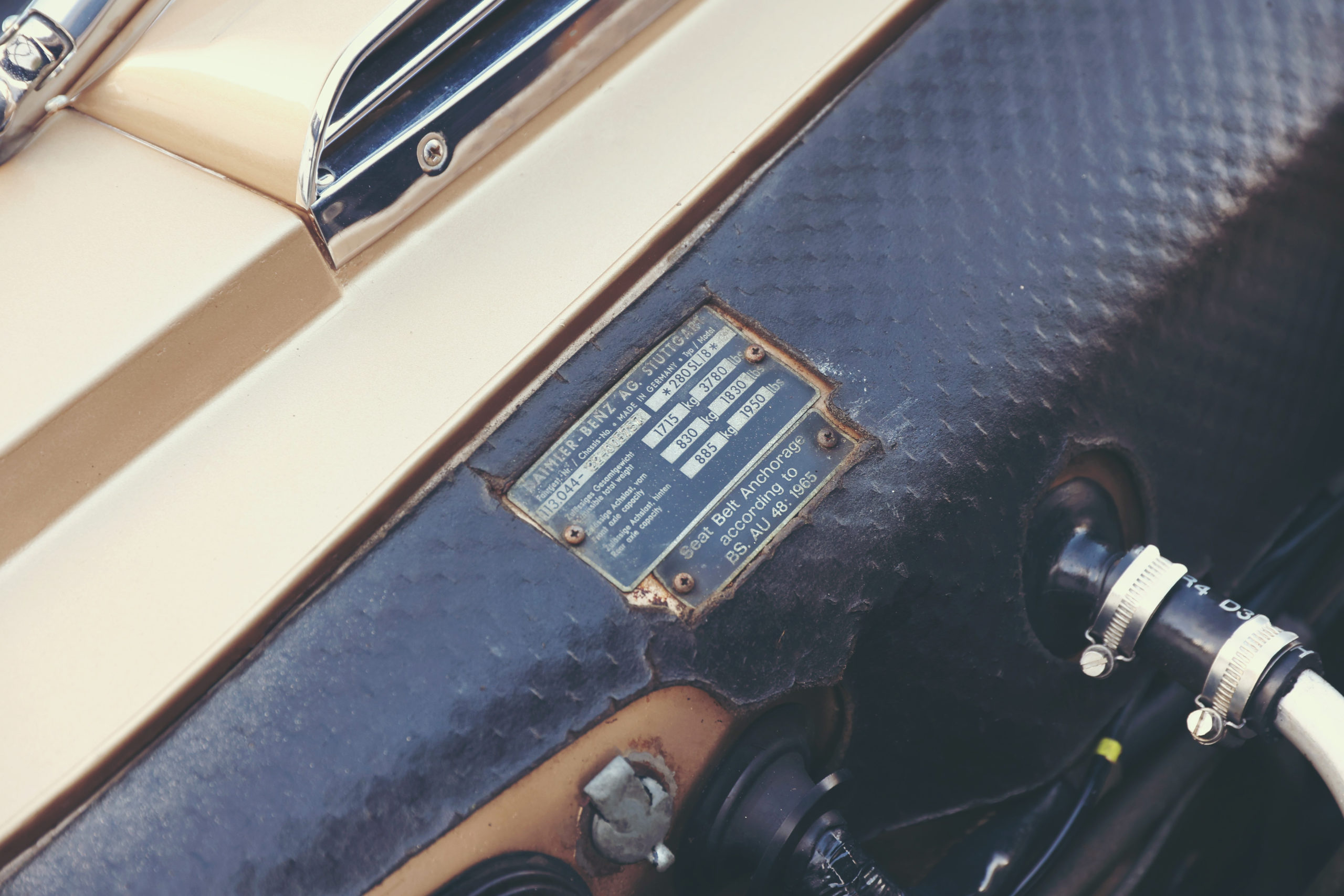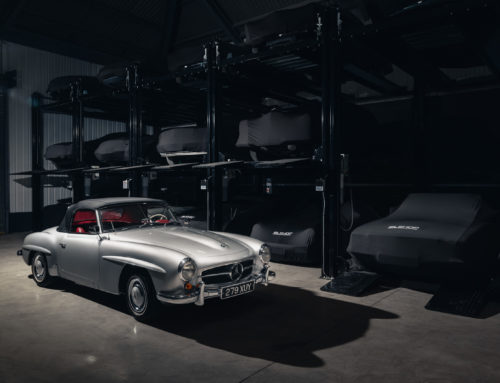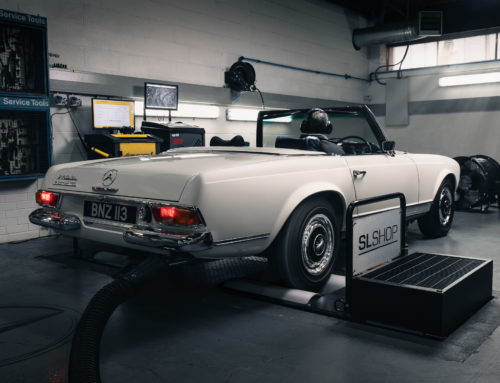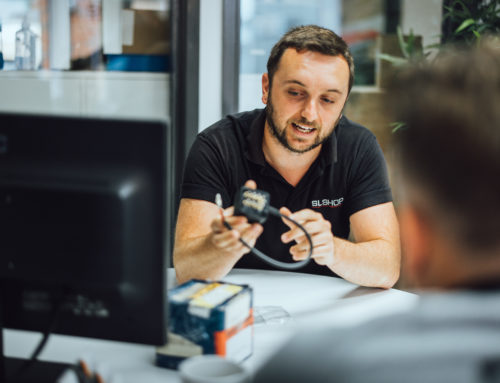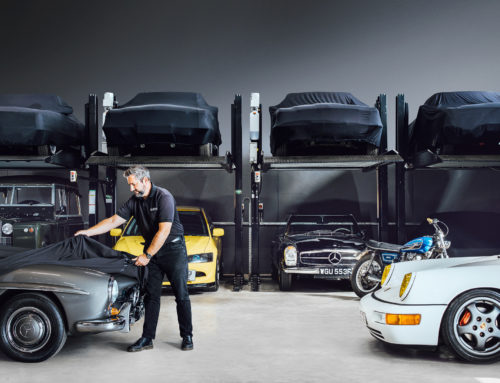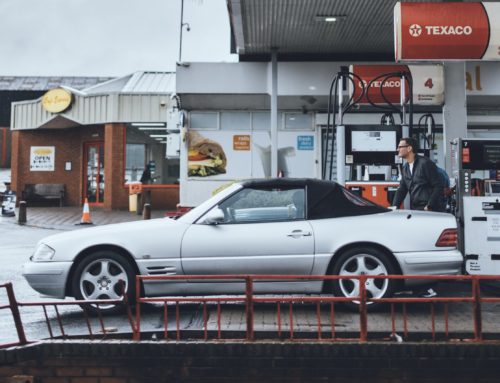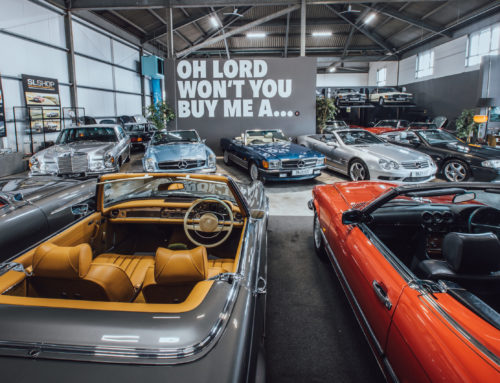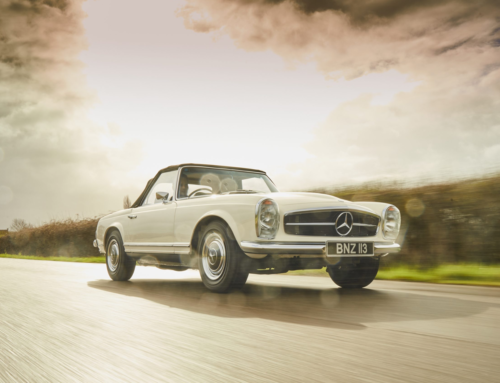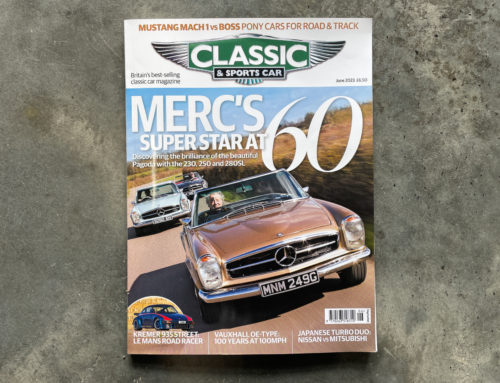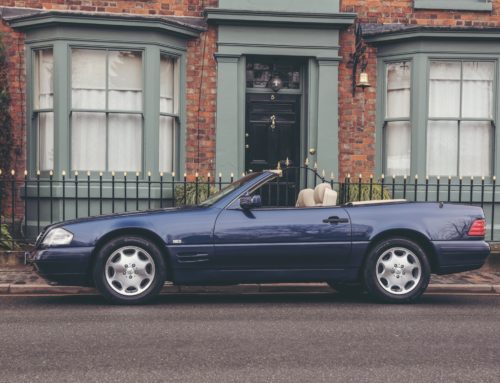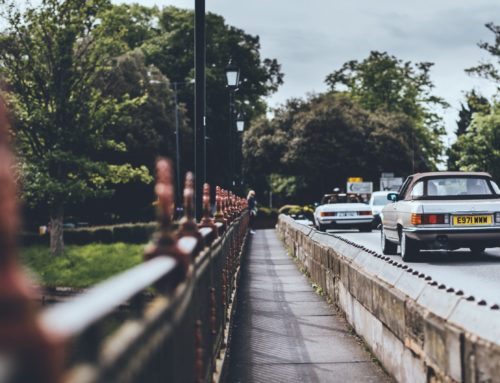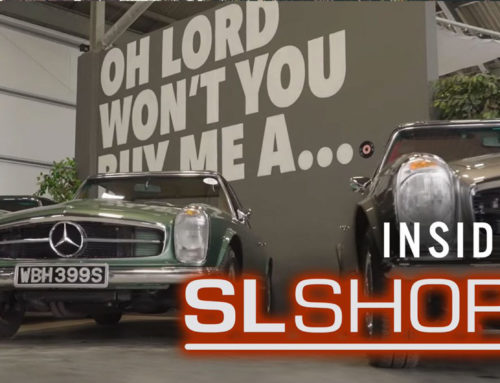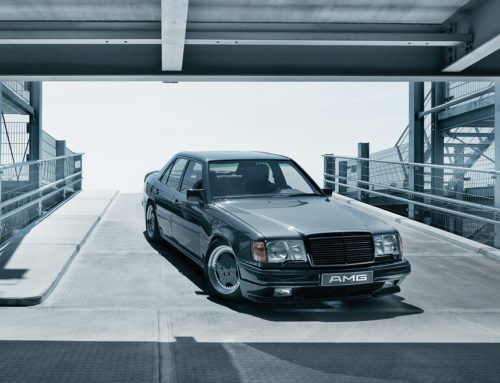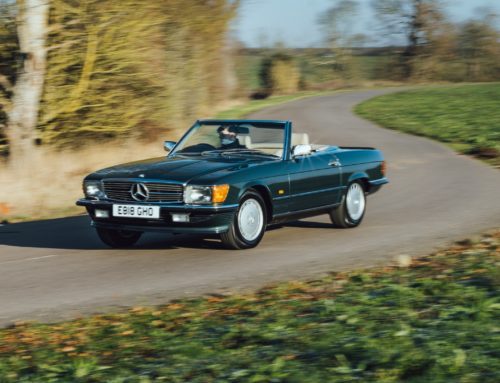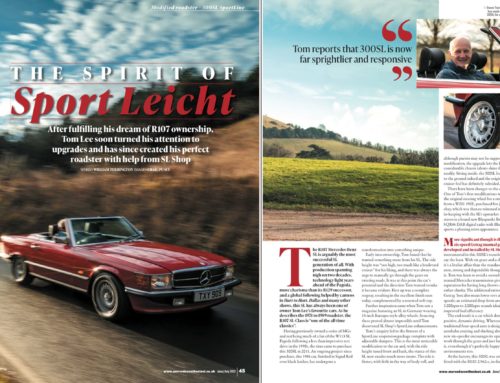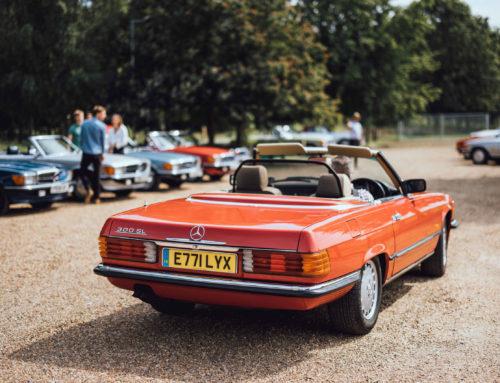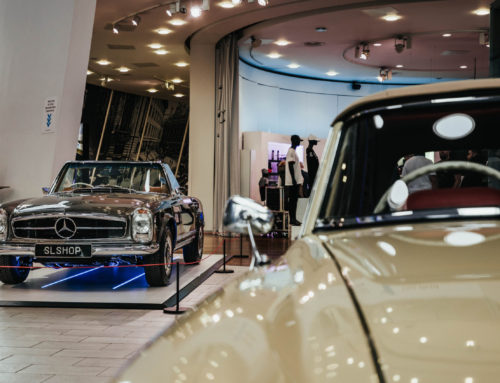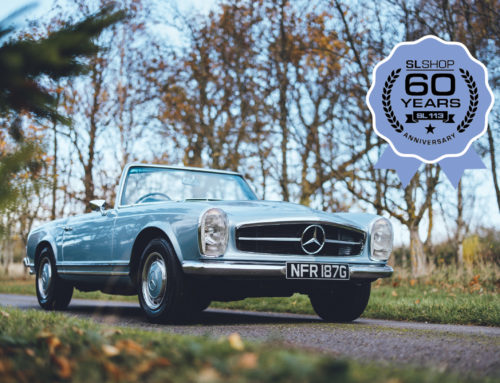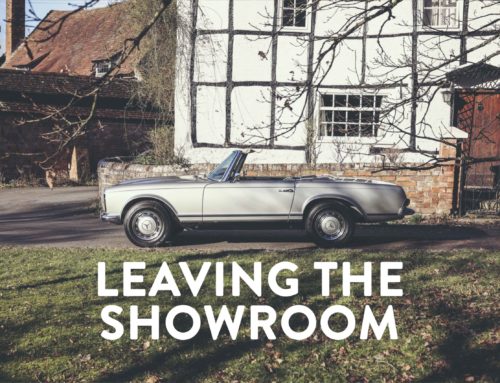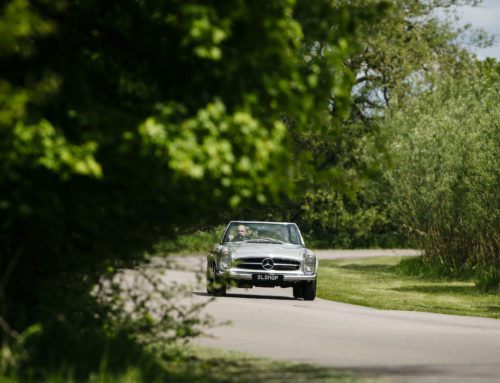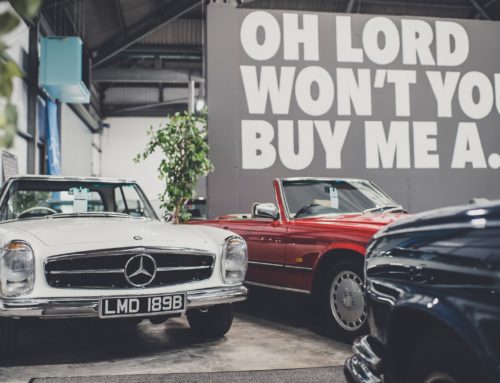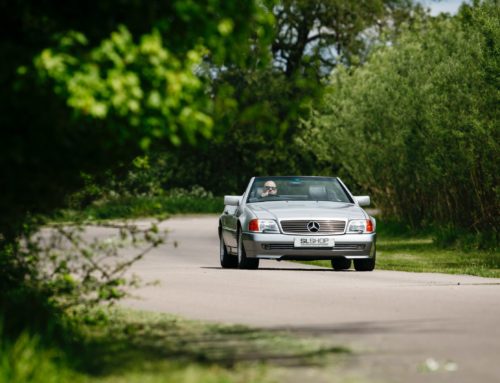Colour. That essential layer of beauty that captures an enthusiast’s eyes and ultimately, spurs the opening of their wallet. Whether it is 1963 or 2023, the paint colour of a car remains one of the most common attractions for people buying a classic or modern car. Some choose a vehicle solely based on its colour, while others view this as a more minor detail. Needless to say, paint plays a huge role in influencing the value of a classic car.
This article explains why paint is so important to value and what you can do to protect or reinstate the quality of your paintwork.
WHY GOOD PAINTWORK IS IMPORTANT
Before we consider the value of a classic car, it’s important to remember that a vehicle’s story is often influenced by the paint in which it is covered. Would the Lamborghini Miura be as famous as it is today without the ‘Verde Miura’ finish? Would the R107 be as famous as it is today without Signal Red (568)? The answer is no. Paint is intrinsically linked to a vehicle’s success story.
Also, consider character and charisma. Engineers and designers spend years perfecting the vehicle they are hoping to launch. The paint needs to show off the carefully thought-out profile of the vehicle – the waistline and the flow of the panels and roofline. It is this fusion of paint and metal that gives the car its identity, showcasing the ideas of those designers and engineers.
Lastly is rarity. Paint finishes are phased in and out with each model. Some never return. The R107 SL was produced in over 100 colours. Some we will never see again. Those rarer colours such as ‘Sahara Yellow’ are atypical and therefore inimitable. This makes them candidates for potentially handsome asking prices in the present and future. So, trends aside, it could be a wise investment to go against the grain and acquire a classic car in one of these more left-field colours…
IDENTITY: AUTHENTICITY AND PAINT CODES
As we have alluded to, paint finishes are one of many motives for a buyer to invest in a classic car. The reasons for this are that the authenticity of the vehicle can sometimes be measured by the colour in which it is painted. For instance, if the data card states the vehicle was born with DB180, and the vehicle still sports the same finish, the vehicle can be classed as data card correct. Like the engine, take this away and you are left with a vehicle that has partially lost its identity. However, the original engine is a far more important asset to the vehicle than colour – the latter can be reversed, whereas sourcing a lost engine would be a futile task.
Locate your Mercedes Pagoda Data Card and Colour Identity Here
REFINISHING YOUR CLASSIC CAR IN THE ORIGINAL COLOUR
If you own or are deliberating purchasing a classic Mercedes-Benz, consider the colour as crucial to your investment. As time goes on, the paintwork can become tired, scratched, and marred – usually indicated by swirls and bubbling. In some scenarios, a detailing paint correction program can eliminate some of these flaws, but sometimes, paintwork can be too far gone. Likewise, if you’ve had to have fabrication work carried out, a proper refinish would be the best course of action.
With the original colour palettes easily accessible for most models of classic Mercedes-Benz and the option for full, partial or isolated repaints, you can easily restore your classic Mercedes-Benz to factory correct conditions. This is a highly advisable suggestion for owners who are looking to preserve the long-term value of their Mercedes-Benz.
REFINISHING YOUR CLASSIC CAR IN AN ALTERNATIVE COLOUR
Now, the purpose of this article isn’t to deter you from choosing an alternative colour for your classic Mercedes-Benz, but instead to reassure owners that repainting their car, in general, is a favourable move. We advise owners to always choose MB-correct colourways. A classic Mercedes-Benz finished in a non-MB colour is likely harder to rehome (should you decide to sell it).
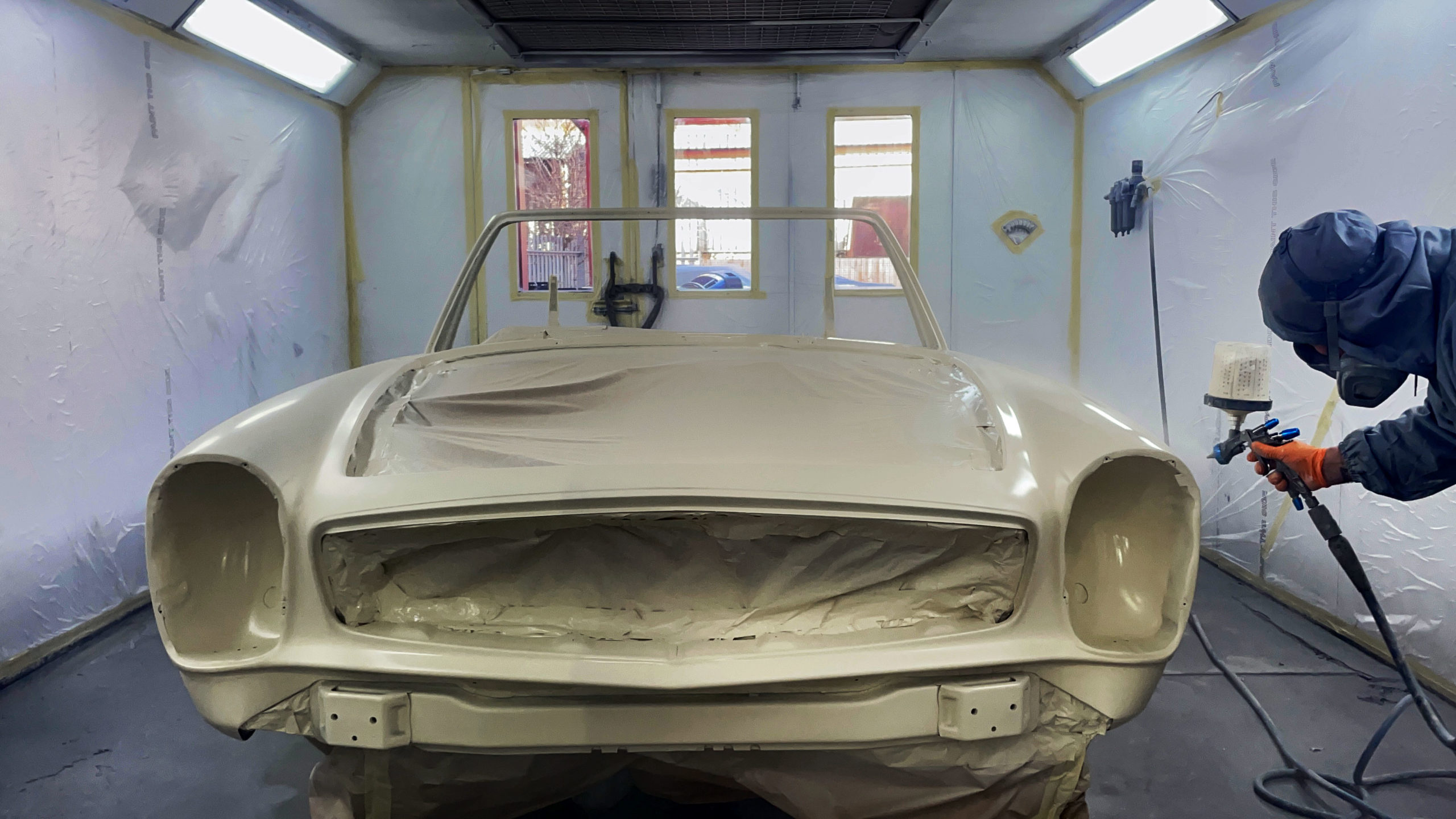
The most important point to emphasise here, is that repainting a classic Mercedes-Benz in a different colour to that on the data-card isn’t necessarily damaging to its value. Everything is reversible and sometimes, choosing an alternative more popular colour will be the best decision for your vehicle and its future value.
CASE STUDY: W113 PAGODA
For instance, we often see Sand Beige Metallic Pagodas (467) repainted in a more contemporary colourway. In some cases, this could be a favourable move, as data suggests that enthusiasts prefer colours such as anthracite and silver, to name a few.
On the flip side, an entirely original Pagoda finished in Sand Beige Metallic with all original panels, matching engine numbers and original interior, would more likely be worth leaving in its factory specification. This is due to the sheer volume of cars that have been altered in colour, meaning that an all original, un-restored Sand Beige Metallic Pagoda is increasingly hard to find.
CONCLUSION:
Ultimately, the colour of your classic Mercedes-Benz is your choice. Where values are concerned, we advise you to invest in your paintwork where possible to ensure it is in a good state, protecting it with the right products and even treating it to a detailing session every now and again. Where re-painting your classic Mercedes-Benz is concerned, we highly advise you consider your car as an individual entity – if it is completely original, try and keep it the same colour and have the paintwork repainted if necessary.
If repainting in a different colour, always choose an MB colourway and ensure that it is done correctly by a certified paint shop. This will ensure quality and the vehicle’s integrity.
REPAINT YOUR CLASSIC OR MODERN CLASSIC MERCEDES
As the leading classic Mercedes-Benz specialist, we can revive your paintwork with either a detailing session or by repainting your vehicle by hand. The latter is a certified process carried out by our leading partnering paint shop who spend hours hand-painting Mercedes models of all generations. Speak to a member of the team today for a quote or read more about our paint options.
Share With Your Fellow Enthusiasts
Colour. That essential layer of beauty that captures an enthusiast’s eyes and ultimately, spurs the opening of their wallet. Whether it is 1963 or 2023, the paint colour of a car remains one of the most common attractions for people buying a classic or modern car. Some choose a vehicle solely based on its colour, while others view this as a more minor detail. Needless to say, paint plays a huge role in influencing the value of a classic car.
This article explains why paint is so important to value and what you can do to protect or reinstate the quality of your paintwork.
WHY GOOD PAINTWORK IS IMPORTANT
Before we consider the value of a classic car, it’s important to remember that a vehicle’s story is often influenced by the paint in which it is covered. Would the Lamborghini Miura be as famous as it is today without the ‘Verde Miura’ finish? Would the R107 be as famous as it is today without Signal Red (568)? The answer is no. Paint is intrinsically linked to a vehicle’s success story.
Also, consider character and charisma. Engineers and designers spend years perfecting the vehicle they are hoping to launch. The paint needs to show off the carefully thought-out profile of the vehicle – the waistline and the flow of the panels and roofline. It is this fusion of paint and metal that gives the car its identity, showcasing the ideas of those designers and engineers.
Lastly is rarity. Paint finishes are phased in and out with each model. Some never return. The R107 SL was produced in over 100 colours. Some we will never see again. Those rarer colours such as ‘Sahara Yellow’ are atypical and therefore inimitable. This makes them candidates for potentially handsome asking prices in the present and future. So, trends aside, it could be a wise investment to go against the grain and acquire a classic car in one of these more left-field colours…
IDENTITY: AUTHENTICITY AND PAINT CODES
As we have alluded to, paint finishes are one of many motives for a buyer to invest in a classic car. The reasons for this are that the authenticity of the vehicle can sometimes be measured by the colour in which it is painted. For instance, if the data card states the vehicle was born with DB180, and the vehicle still sports the same finish, the vehicle can be classed as data card correct. Like the engine, take this away and you are left with a vehicle that has partially lost its identity. However, the original engine is a far more important asset to the vehicle than colour – the latter can be reversed, whereas sourcing a lost engine would be a futile task.
Locate your Mercedes Pagoda Data Card and Colour Identity Here
REFINISHING YOUR CLASSIC CAR IN THE ORIGINAL COLOUR
If you own or are deliberating purchasing a classic Mercedes-Benz, consider the colour as crucial to your investment. As time goes on, the paintwork can become tired, scratched, and marred – usually indicated by swirls and bubbling. In some scenarios, a detailing paint correction program can eliminate some of these flaws, but sometimes, paintwork can be too far gone. Likewise, if you’ve had to have fabrication work carried out, a proper refinish would be the best course of action.
With the original colour palettes easily accessible for most models of classic Mercedes-Benz and the option for full, partial or isolated repaints, you can easily restore your classic Mercedes-Benz to factory correct conditions. This is a highly advisable suggestion for owners who are looking to preserve the long-term value of their Mercedes-Benz.
REFINISHING YOUR CLASSIC CAR IN AN ALTERNATIVE COLOUR
Now, the purpose of this article isn’t to deter you from choosing an alternative colour for your classic Mercedes-Benz, but instead to reassure owners that repainting their car, in general, is a favourable move. We advise owners to always choose MB-correct colourways. A classic Mercedes-Benz finished in a non-MB colour is likely harder to rehome (should you decide to sell it).

The most important point to emphasise here, is that repainting a classic Mercedes-Benz in a different colour to that on the data-card isn’t necessarily damaging to its value. Everything is reversible and sometimes, choosing an alternative more popular colour will be the best decision for your vehicle and its future value.
CASE STUDY: W113 PAGODA
For instance, we often see Sand Beige Metallic Pagodas (467) repainted in a more contemporary colourway. In some cases, this could be a favourable move, as data suggests that enthusiasts prefer colours such as anthracite and silver, to name a few.
On the flip side, an entirely original Pagoda finished in Sand Beige Metallic with all original panels, matching engine numbers and original interior, would more likely be worth leaving in its factory specification. This is due to the sheer volume of cars that have been altered in colour, meaning that an all original, un-restored Sand Beige Metallic Pagoda is increasingly hard to find.
CONCLUSION:
Ultimately, the colour of your classic Mercedes-Benz is your choice. Where values are concerned, we advise you to invest in your paintwork where possible to ensure it is in a good state, protecting it with the right products and even treating it to a detailing session every now and again. Where re-painting your classic Mercedes-Benz is concerned, we highly advise you consider your car as an individual entity – if it is completely original, try and keep it the same colour and have the paintwork repainted if necessary.
If repainting in a different colour, always choose an MB colourway and ensure that it is done correctly by a certified paint shop. This will ensure quality and the vehicle’s integrity.
REPAINT YOUR CLASSIC OR MODERN CLASSIC MERCEDES
As the leading classic Mercedes-Benz specialist, we can revive your paintwork with either a detailing session or by repainting your vehicle by hand. The latter is a certified process carried out by our leading partnering paint shop who spend hours hand-painting Mercedes models of all generations. Speak to a member of the team today for a quote or read more about our paint options.
Share With Your Fellow Enthusiasts
More from Journal
CARE
THE ULTIMATE CERTIFIED SERVICING INVESTMENT PLAN
Your ownership journey matters to us, which is why we have created a simple certified servicing investment plan, tailored to your individual needs and aspirations.
Start investing today and our dedicated CARE team will work with you to increase the value and enjoyment you receive from your vehicle.

STAY IN TUNE WITH SLSHOP MOMENTS
As part of SLSHOP’s community of enthusiasts, you’ll be the first to hear about events and tours, key product offers, exciting stories from owners around the world and of course… our latest additions to the showroom. So, be the first to know and you might just sneak a car on your driveway or take your car’s condition to new heights with our exclusive replacement parts.
Or, visit SLSHOP Journal
